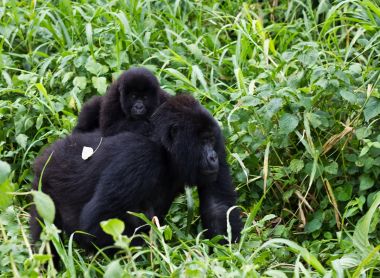Gorilla origins found in half of HIV lineages

Scientists studying the origins of HIV and AIDS recently discovered that half of the human virus' lineages had gorilla origins.
HIV-1, the primary form of the virus that causes AIDS, had roots in the gorillas of Cameroon in two of its four groups.
Each HIV-1 group came from a simian-to-human transmission of the virus. The origin of groups N and M were previously identified as chimpanzees in southern Cameroon.
Group M is the type of HIV-1 that has infected over 40 million people across the globe, and triggered the AIDS epidemic. Group N is relatively rare, appearing in only a couple dozen people.
Research published in the Proceedings of the National Academy of Sciences journal on Monday identified the origins of the other two HIV-1 groups - O and P.
Study co-leader and virologist Martine Peeters of the Institute for Research and Development and University of Montpellier in France explained that western lowland gorillas in southern Cameroon are the source of these two groups.
"Thus, both chimpanzees and gorillas harbour viruses that are capable of crossing the species barrier to humans and causing major disease outbreaks," Peeters said.
"The mode of transmission is most likely exposure to infected blood and/or tissues during hunting and butchering for bushmeat."
The researchers drew their conclusion after analysing the fecal matter of different types of gorillas in central Africa.
Group O has infected about 100,000 people in Cameron, Nigeria, Gabon, and other neighbouring countries, while group P has only been identified in two persons.
Study co-leader and University of Pennsylvania microbiologist Beatrice Hahn said that there are no inherent properties of group O that make it less pathogenic than group M.
"Hence, on this occasion, humans got lucky," she said.
HIV-2 is less easily transmitted than HIV-1, and has a slower progression to AIDS. It is primarily restricted to western Africa, and originated from sooty mangabey monkeys.











